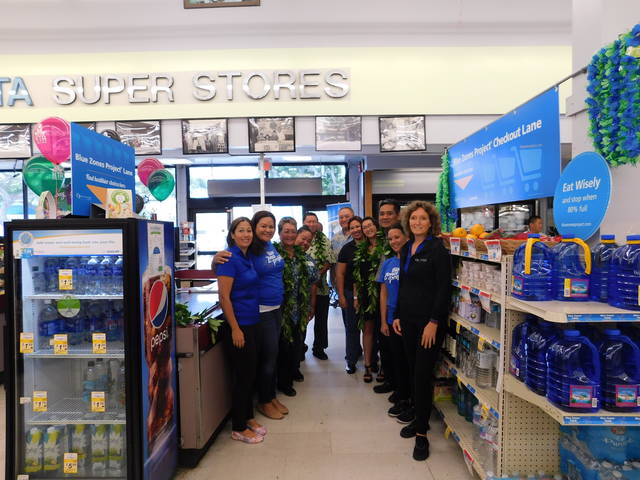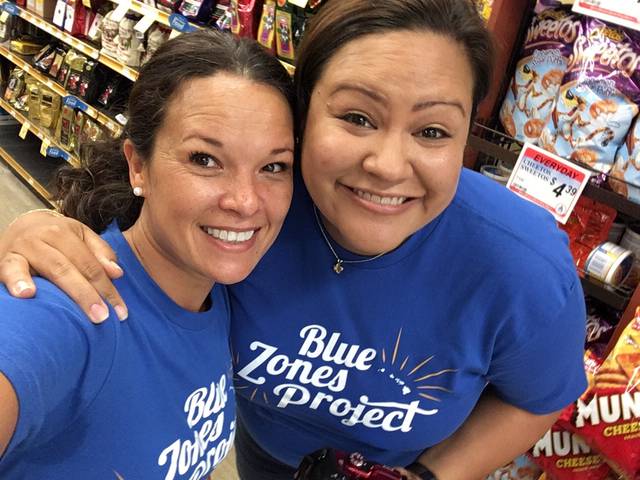KAILUA-KONA — Adding years to your life wouldn’t normally make you blue.
KAILUA-KONA — Adding years to your life wouldn’t normally make you blue.
The opposite is true across Hawaii Island, however, as it earned the distinctions of the first countywide and first islandwide Blue Zones Project in the nation with the addition of West Hawaii to the endeavor.
Blue Zones Project West Hawaii’s Kirstin Kahaloa, who serves as community engagement lead, summed up the initiative.
“It’s a grassroots health initiative to promote nine theories (of health and wellness) in various activities and various educational opportunities,” she said.
The theories began with Dan Buettner, a National Geographic Fellow, who traveled across the world looking for the common threads of the healthiest, longest-living communities.
Among the nine theories are that more natural movement, deriving purpose from life, and being social beings amid positive networks all contribute to longer, more productive lives.
Buettner will be on Hawaii Island on Aug. 26, serving as a speaker at the launch of community-wide Blue Zones Project programs aimed at meeting the initiative’s goals.
The launch is set for 1:30-5 p.m. at Kona Commons in the Old Sports Authority. It will include a Keiki Zone featuring activities focused on natural movement, a downshift lounge with free massages and other anti-stress activities, and a plant slant kitchen with food samples and recipes highlighting healthy eating habits.
Kahaloa said there will be entertainment, adding those who attend may sign up for community walking groups, which are known in Japan as moais, or “meetings with purpose.”
The Blue Zones Project attempts pervasive community outreach by inserting itself in several key institutions, from government and education centers to workplaces and grocery stores. That work has been going on across Hawaii Island for months, but has more recently arrived in West Hawaii.
The KTA Super Stores location in Kailua-Kona became the first Blue Zones Project dual grocery and worksite approved business in West Hawaii in April, while KTA stores in East Hawaii went blue almost a year ago.
“For customers, we put signage up for the healthy foods. We have different types of healthy snacks and options we provide,” said Debbie Arita of KTA. “We have a special Blue Zone checkout lane in each store where they can pick up healthy food options on the way out of the store.”
KTA stores swap out candy in these aisles for dried and fresh fruits, among other products.
They also offer employee-based programs, including downshift spaces in lounges for employees to de-stress and organize healthy lunches that are akin to potlucks — promoting health and social interaction in a de-stressed environment, all keys to Blue Zones Project theories on how to live longer and happier.
The Hawaii Department of Education is also planning to roll out Blue Zones Project programs in West Hawaii as early as this fall to piggyback on work public schools are already doing to promote healthier lifestyles for their students.
The target schools range from elementary to high school and span the areas of North and South Kona, said Sandra Taosaka, HDOE community engagement specialist for West Hawaii.
Schools like Kohala Elementary and Kua O Ka La, a charter school in Puna, are already certified Blue Zones Project institutions.
“A lot of schools are already doing great things like school gardens and peer groups increasing student voice, so we want to use student voice to promote and advocate for healthy choices,” said Taosaka, mentioning specifically messages geared at the dangers of using tobacco. “We’re not looking for extra programs, but instead at how do we enhance active policies and programs?”
Supported on Hawaii Island by sponsor HMSA and a variety of community backers, Kahaloa said she believes the goal of the Blue Zones Project is to go statewide, using Hawaii Island as its model.
Those interested in learning more about the Blue Zones Project can contact Kahaloa by phone at 319-8731, or via email at Kirstin.Kahaloa@sharecare.com.


